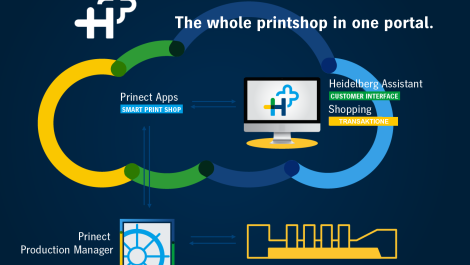Close Brothers Asset Finance has decades of experience in the printing sector and is increasingly applying its expertise to delivering flexible finance for digital equipment deals.
The digital print sector is one that is renowned for innovation, and in Close Brothers Asset Finance, digital print companies can find a finance partner that is also committed to delivering innovative solutions.
Having amassed more than 25 years of experience in dealing with the print industry, the company has an instinctive feel for the dynamics and the challenges of many types of printing business, large and small, litho and, increasingly, digital. In fact, in the past year customers looking to get into digital printing or to enhance their existing digital offering have become a much bigger part of the Close Asset Finance Business, said commercial director Jon Bennett.
‘Over the last 12 months we have been able to bring the good things we have brought to the traditional print market – our understanding, expertise and ability to be both flexible and creative – into digital print. We have done a lot of business on both the cut sheet toner and inkjet sides. The feeling with digital is that it’s a buoyant market. People are very positive about the future of digital, businesses are growing, and it has got an exciting edge to it.’
For the first time, this has been bringing Close Brothers into contact with 100% digital outfits, which are very often profitable and delivering great ROI, as well its more long-standing customer base that is looking for financial solutions to help them add digital print and other revenue streams as a complement to litho. Either way, the company has a bespoke approach to every deal, which gives customers a range of flexible options that can be tailored to every need.
‘We treat every application, every customer and every deal as an independent, bespoke deal in which we need to find the right solution for the customer,’ said Mr Bennett. ‘Everything is about the customer; we don’t apply a set of rules to it, we listen to what the customer wants and try to deliver as close to that as possible. Our USP is finding flexible solutions to the problems faced by SMEs. We tailor deals to fit often complex issues that traditional funding solutions cannot.’
‘In the digital sector, we have found that three year deals did not meet customers’ requirements. We try and deliver low deposits, longer terms and reduced payments. In some cases, we are bringing existing debts into new lending and extending the term to make it neutral to the cash flow. We try to engineer a solution to match what the company is trying to do.’

Jon Bennett
Close Brothers’ empathy with the vagaries of the print industry also allows it to react with flexibility to events as they unfold. An example of this has been shown recently, with issues in the paper supply chain following the liquidation of PaperlinX. With lines of credit from the remaining merchants becoming scarce, Close Brothers has been able to perform a valuable role in injecting cash into printing businesses, perhaps through financing an unencumbered piece of equipment, to facilitate the purchase of paper supplies.
It is able to help fund every aspect of a print business, from paper and prepress, through the print production equipment, to finishing technology, and very often does so through its strategic partnerships with the manufacturers themselves, giving them confidence that repayments will be made after installation.
Key to Close Brothers’ success in the digital print market has been its access to the Regional Growth Fund (RGF), which awards grants to small and medium sized businesses in England (outside of London and the South East), where applicants can show that the investment will create or safeguard jobs.
Close Brothers has announced that all £30 million it received in the third round of RGF funding has now been awarded. Almost 40% of this (around £12 million) went directly into the print sector, through 263 investments that have created 565 jobs and safeguarded a further 642. Companies can gain up to 20% of the cost of the kit through the RGF, giving them the initial deposit they need.
In the latest (fifth) round of the Fund, Close Brothers has received £40 million to distribute, so there are many more opportunities for print companies to take advantage of this opportunity.
The benefits an RGF grant can bring to customers are substantial, according to Jon Bennett. He said: ‘It gives them the ability to fund an asset when they may not necessarily have a sufficient deposit available from their cash flow. Their payments will be lower because the RGF grant brings their financial requirements down. Another huge benefit is that an ordinary small printing company does not have to spend a huge amount of time negotiating with the Government: Close Brothers will look after the application on their behalf. Plus, the turnaround time can be only around five days, and they will get the finance at the point that they need it.’
There are numerous other benefits of dealing directly with Close Brothers too, in comparison to going through more traditional avenues to finance, such as the high street banks. One is that, since Close Brothers speaks to printing companies five days a week, printers will be immediately dealing with someone that understands their business and their challenges. Secondly, there is not a huge amount of bureaucracy within the organisation, so any customer is just one member of staff away from a decision maker. This provides a speed of turnaround that a high street bank just could not match.
There are a number of finance options available, the most common of which are detailed in the boxes below, but Mr Bennett emphasises that every customer and its requirements are considered unique and dealt with accordingly.
‘We would always match the solution to the situation,’ he continued. ‘We listen and try to make the deal look like the one that the customer wants, as well as trying to make the experience as fast and easy as possible. We don’t just do deals either: we ask what this finance will mean for the business going forward and what help we can also provide with this.’
Nor has the company’s appetite for lending been diminished by the recession, with its loan book – of which the print sector is a significant proportion – doubling since 2007. It is all part of Close Brothers Asset Finance’s commitment to the print sector in general and the digital print sector particularly. ‘We want to be known as the specialist lender of choice in the digital print market, just like we are in litho,’ concluded Jon Bennett.





